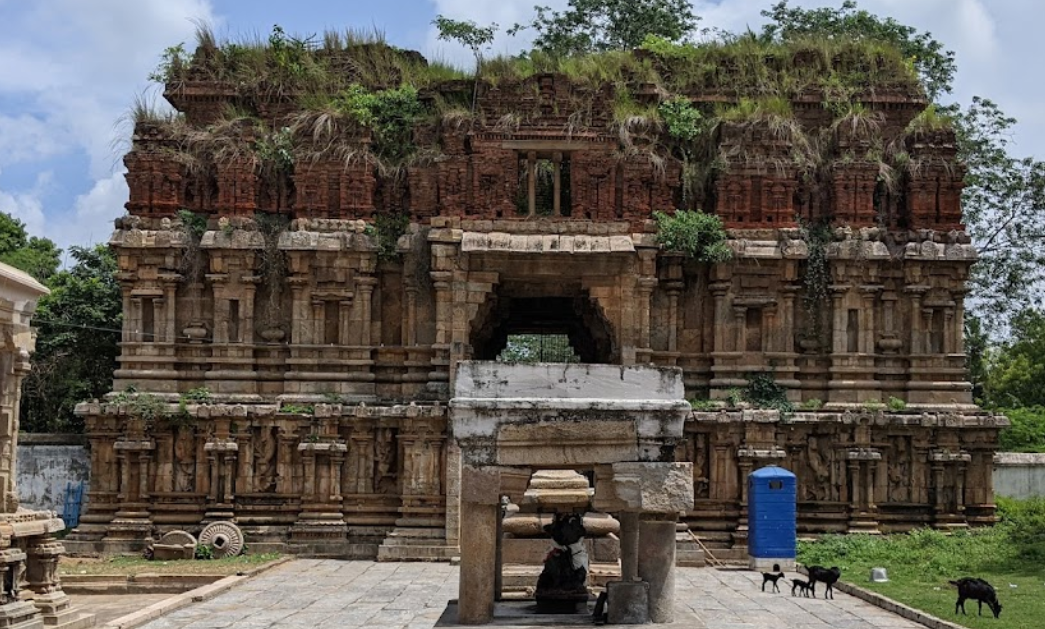Garuda, the eagle vehicle of Lord Vishnu, once obtained a nectar pot from Devendra to free his mother from slavery. While passing through this place, he was intercepted by demons, causing three drops of nectar to fall here. These drops transformed into a Shivalinga, a Mother Goddess, and a holy spring. Garuda bathed in this spring, known as Jadayu Theertham, and emerged victorious in the battle.
Sthala Puranam :
Pazhayarai was once the capital city of the Cholas, ruled by Sundara Chola, and it is where Raja Raja Chola I spent his childhood. It is said that he visited the temple daily to pray to the Lord. The temple is a maadakoil, built in the shape of a chariot, initially constructed by Kochchenga Cholan and later remodelled by subsequent Chola rulers.
This sacred site is the birthplace of Mangayarkarasi Nayanar, and the Lord here has been extolled in hymns by the saints Sambandar, Appar, Sundarar, and Sekkizhar. The presiding deity is a Swayambhu Murti (self-manifested deity). Chandran (the Moon God) prayed here to Lord Shiva for relief from his afflictions, after which his radiance increased day by day, and he was also cured of his breathing problems.
Appar undertook fasting at this temple after his reconversion to Shaivism from Jainism. This temple is part of the Pazhayarai Pancha Krosha Sthalams, one of four sets of Pancha Krosha Sthalams in Tamil Nadu. It is believed that visiting six specific temples—Pazhayarai, Nallur, Tiruvalanchuzhi, Sakti Muttram, Patteeswaram, and Avoor—on the same day brings great benefits to devotees.
According to legend, Garuda was carrying nectar obtained from Indra for the cure of his mother. On his journey, he encountered demons, and during the battle, three drops of nectar fell to the ground. One drop transformed into Lord Shiva, another into Parvati, and the third became a holy spring, known as Jatayu Theertham. Garuda bathed in this spring and triumphed over the demons.
During the Chola period, the temple was centrally located in Pazhayarai, surrounded by four main temples in each cardinal direction: Keezhthali (east), Metrali (west), Vadathali (north), and Thenthali (south). Kamadhenu, the wish-fulfilling cow from Devaloka, had four daughters: Patti, who is worshipped at Keezhthali (Patteeswaram); Vimali, worshipped at Vadathali; Sabali, worshipped at Metrali; and Nandhini, worshipped at Thenthali (Muzhayur).
Administration History :
The temple was originally built by Aditya Chola and later renovated by Rajaraja Chola I, reflecting the Chola dynasty's patronage of Hindu temples. Over the years, it became a significant religious centre, receiving continuous support and renovations from subsequent Chola rulers. The temple served as a focal point during the Chola period, with nearby war camps established to secure the area. It was also associated with the royal family, notably the upbringing of King Rajendran under Princess Kundavai. The temple continues to be administered by the Hindu Religious and Charitable Endowments Department of the Government of Tamil Nadu.
